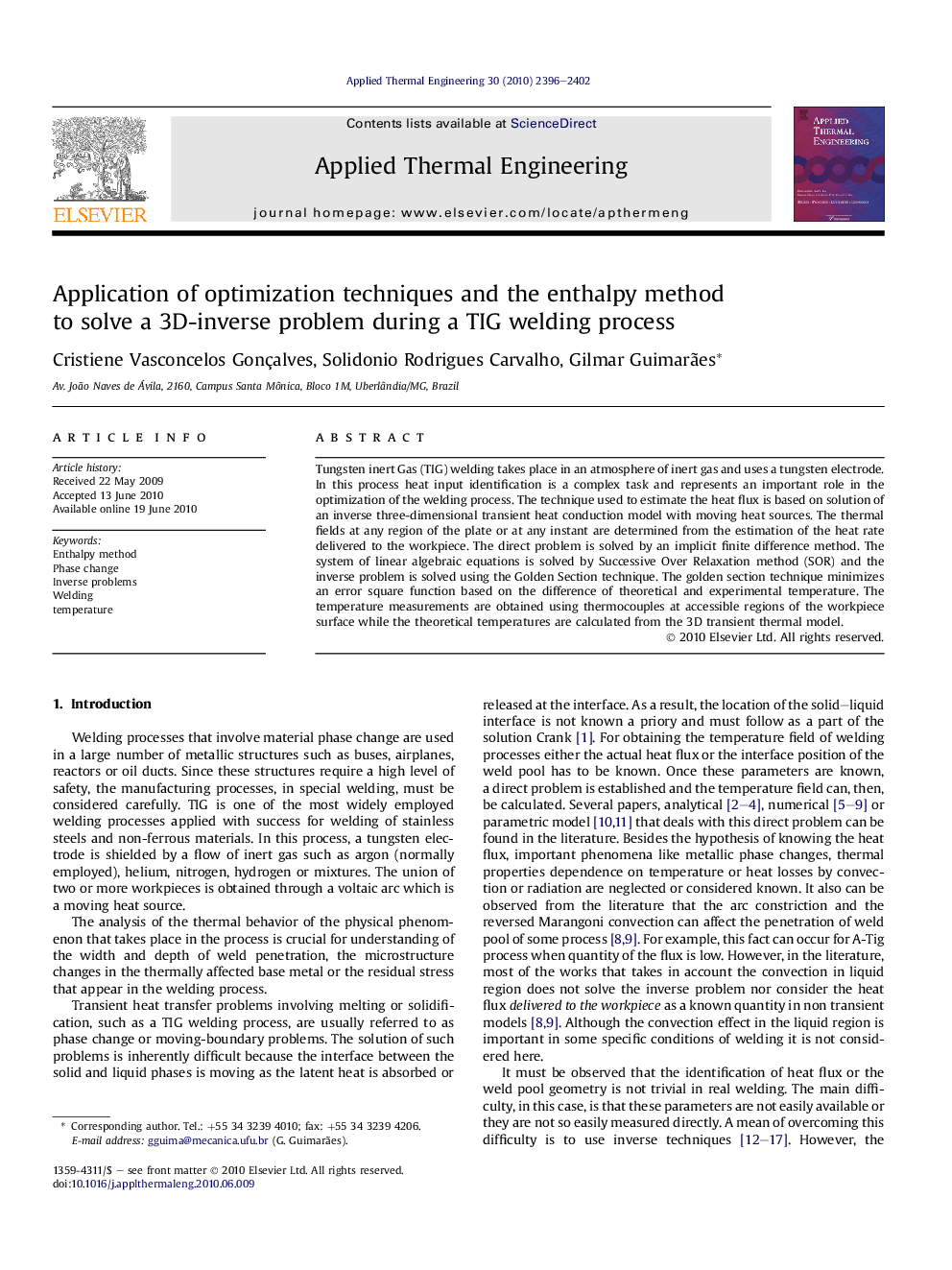| Article ID | Journal | Published Year | Pages | File Type |
|---|---|---|---|---|
| 648170 | Applied Thermal Engineering | 2010 | 7 Pages |
Tungsten inert Gas (TIG) welding takes place in an atmosphere of inert gas and uses a tungsten electrode. In this process heat input identification is a complex task and represents an important role in the optimization of the welding process. The technique used to estimate the heat flux is based on solution of an inverse three-dimensional transient heat conduction model with moving heat sources. The thermal fields at any region of the plate or at any instant are determined from the estimation of the heat rate delivered to the workpiece. The direct problem is solved by an implicit finite difference method. The system of linear algebraic equations is solved by Successive Over Relaxation method (SOR) and the inverse problem is solved using the Golden Section technique. The golden section technique minimizes an error square function based on the difference of theoretical and experimental temperature. The temperature measurements are obtained using thermocouples at accessible regions of the workpiece surface while the theoretical temperatures are calculated from the 3D transient thermal model.
